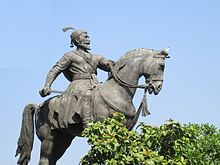Culture Of Maharashtra
Maharashtra is the third largest state of India. It has a long history of Marathi saints of Varakari religious movement, such as Dnyaneshwar, Namdev, Chokhamela, Eknath and Tukaram which forms the one of bases of the culture of Maharashtra or Marathi culture.

The state of Maharashtra spans multiple cultures which includes cultures related to Hindus, Muslims, Buddhists, Sikhs, Christians, etc. Lord Ganesha, Maruti, Mahadeo in form of Shivlinga, Khandoba , Kalubai devi, and Lord Vitthal are some of the deities worshipped by Hindus of Maharashtra. Maharashtra is divided into various regions, such as Marathwada, Vidarbha, Khandesh, and Konkan. Each has its own cultural identity in the form of different dialects of Marathi language,[3] folk songs, food,dress and ethnicity. Marathi Hindus revere many religious figures. Among the figures who originated in the region are Banka Mahar, Bhagu, Damajipanth, Kanhopatra, Karmamelam, Nirmala, Sadna, Sakhubai, Satyakam Jabali and Soyarabai. According to the 2011 census, Hinduism was the principal religion in the state at 79.83% of the total population, while Muslims constituted 11.54% of the total population. Maharashtra has the India's largest Buddhist and Jain populations. Buddhism accounted for 6% in Maharashtra's total population, with 6.53 million followers, which is 77% of all Buddhists in India. Jains, Christians and Sikhs constituted 1.2%, 1.0%, 0.2% of the population respectively. The cuisine of Maharashtra can be divided into two major sections the coastal and the interior. Kokan, the coastal region of Maharashtra has its own type of cuisine which is a combination of dishes influenced by Malvani, Goud Saraswat Brahmin and Goan cuisine [23] Distinctly Maharashtrian dishes include pitla, bhakri, bharleli vangi, ukdiche modak, aluchi patal bhaji, thalipeeth, pav bhaji, Puran Poli, shrikhand, basundi, vada pav, nashik chi misal pav, and Mumbai chaat. Puneri missal, nagpuri, sambar vada, and selucha chanaare also considered to have originated from Maharashtra. The Konkan, Varadi, Agri and khandeshi cuisines are popular with tourists. The specialty dishes of Maharashtran cuisines are often strong in pepper and spice with a twist of curry leaves, coconut and peanuts; well-known dishes include vada pav, misal pav and Mumbai chaat and puneri missal, selucha chana. Typical breakfast items include misal, pohe, upma, sheera, sabudana khichadi and thalipeeth. In some households leftover rice from the previous night is fried with onions, turmeric and mustard seeds for breakfast, making phodnicha bhat. Typical Western breakfast items such as cereals, sliced bread and eggs, as well as South Indian items such as idli and dosa are also popular. Tea or coffee is served with breakfast.